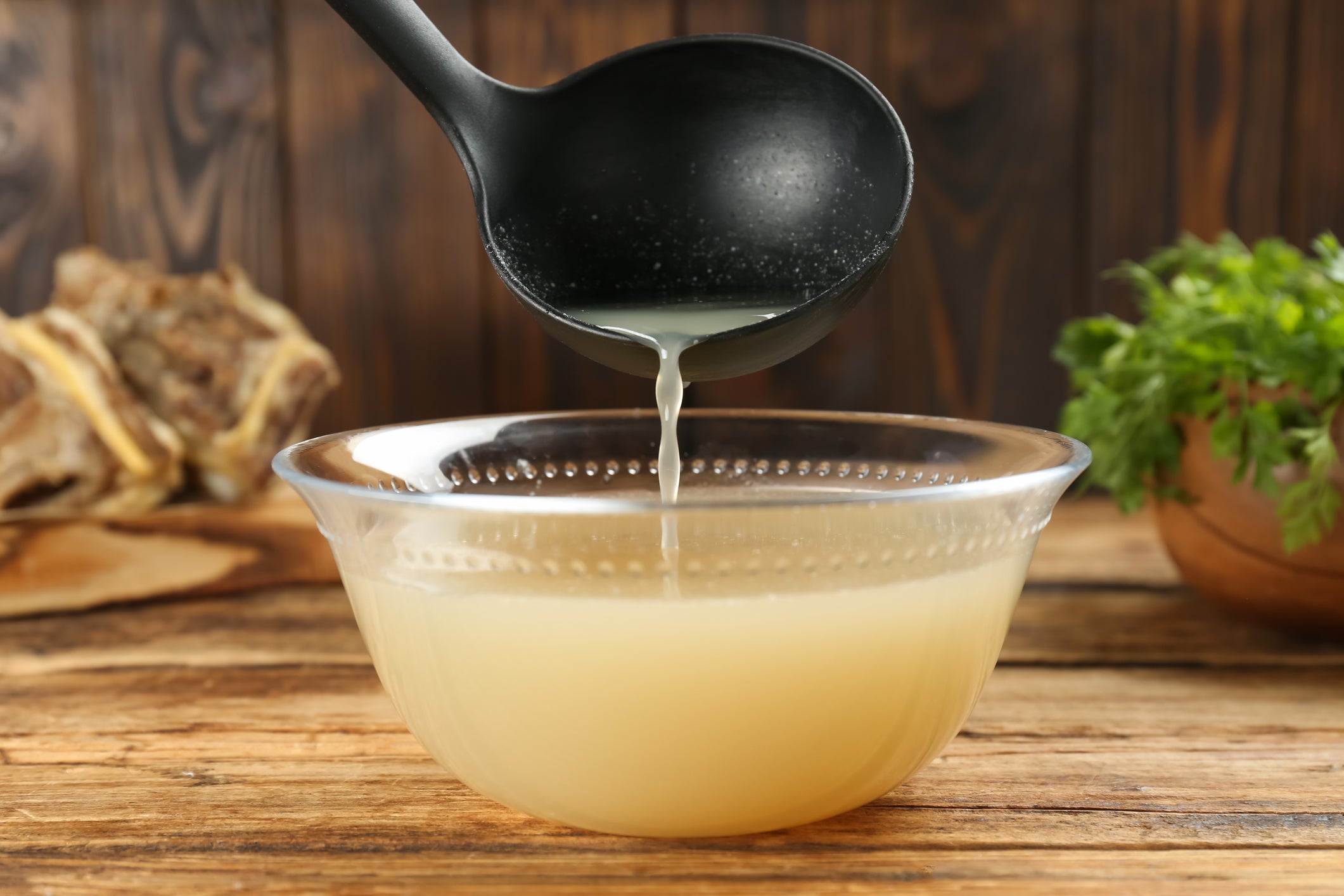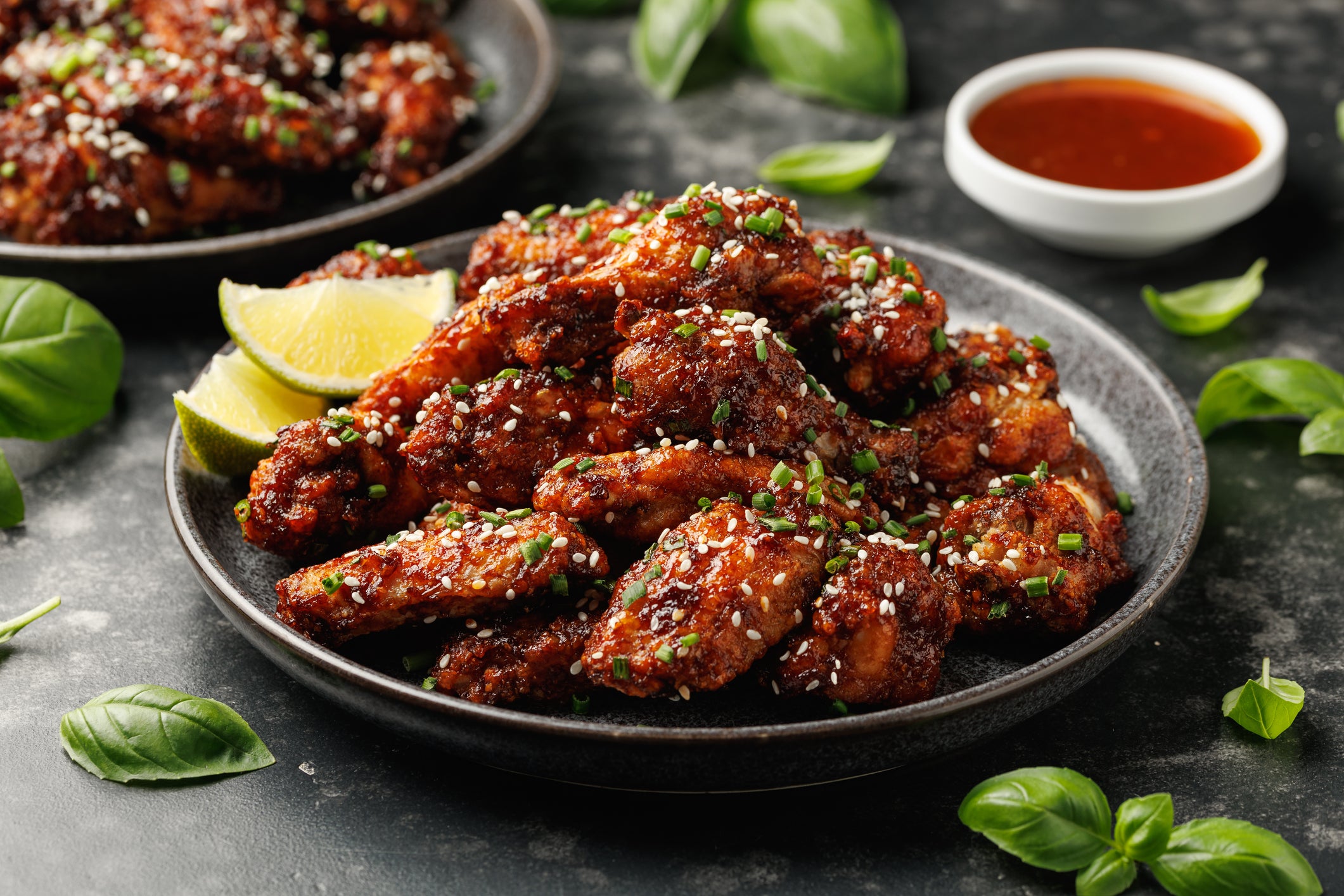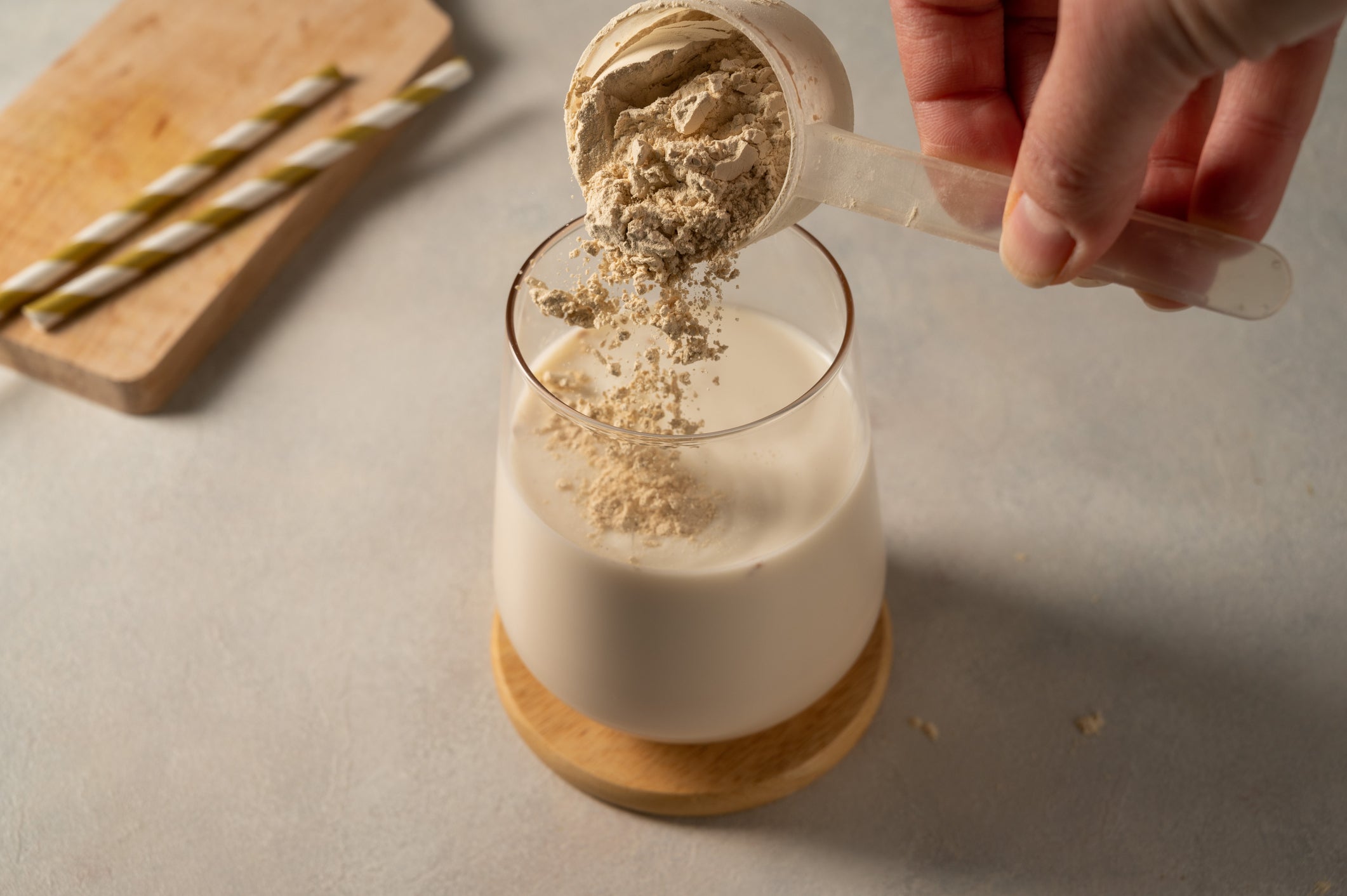Cooking with collagen – how to get more of this wonder nutrient into your diet
Collagen supplements promise youthful skin, strong joints and glossy hair – but is a daily scoop of powder the best way to top up your levels? Hannah Twiggs speaks to the experts to find out whether eating collagen-rich foods could be just as effective


Collagen is having a moment. Once a word reserved for dermatologists and nutritionists, it has become the darling of the beauty and wellness world with powders, pills and even collagen-infused lattes promising the elixir of youth.
You’d be forgiven for thinking that sprinkling a little hydrolysed collagen into your morning smoothie might be the key to eternal smooth skin and joints that never creak. But can we really sip our way to better skin or could a more old-fashioned approach – one based on food rather than supplements – be just as effective?
The role of collagen – and why we want more of it
Collagen is the structural glue of our bodies, supporting skin, hair, nails, joints and even gut health. The bad news? We start losing it in our twenties.
“As we approach our thirties, our body is less able to synthesise new collagen and the breakdown of existing healthy collagen starts,” explains Jessica Shand, a registered naturopathic nutritionist and author of The Hormone Balance Handbook. “This can lead to visible changes in skin’s appearance including loss of volume and elasticity, wrinkle formation and reduced skin hydration, as well as brittle nails, gastrointestinal issues and slow muscle recovery post-exercise.”
It’s no surprise then that we’re all scrambling to top up our reserves. The real question is whether we should be getting it from our diets or a scoop of hydrolysed peptides.
The case for eating your collagen
Ana Da Costa, a recipe developer, consultant and cook, has carved out her own path in the collagen boom. As a chef, her Instagram series Collagen: Age Young champions eating collagen the way people have for centuries through foods like fish heads, pig trotters and chicken feet.
Da Costa’s series was born from years of personal experience and curiosity. "It all started as an ongoing joke among my close friends – apparently, I don’t age. I still get ID-ed when buying Shaoxing wine or even paracetamol," she says. And frankly, I can see why. At 35, even a teenager would envy her skin.
"My friends and even acquaintances are always asking me for my skincare routine, but honestly, my secret isn’t fancy products. I don’t spend money on expensive products, supplements or injectables – it’s simply good food, rich in collagen." The series, which she started shaping in early 2024, showcases how different cultures incorporate collagen-rich foods into their diets, including her own Macanese heritage.
For Da Costa, eating collagen-rich foods isn’t just a trendy experiment – it’s how she was raised. Growing up, eating the whole fish was normal. “We still very much follow the nose-to-tail philosophy when cooking. Using the whole animal not only respects the ingredient but also ensures we’re getting the most nutrition, including all the natural collagen from the skin, tendons and bones.” Her mother always favoured fish heads over fillets, but they never discussed collagen – “We just ate it," she says. It was only as her mother began ageing that collagen became a talking point, particularly for joint and bone health.
Da Costa believes that many people already eat collagen-rich foods without realising it. “For example, pig or beef’s cheek and oxtail are packed with collagen – they are hard-working muscles containing a lot of connective tissue, including collagen. Chicken wings are another great source, especially in the skin and connective tissues.”
Her favourite dishes from childhood include braised pig trotters with ginger and black vinegar – a dish traditionally eaten postpartum in Chinese culture to aid recovery – and chicken feet in black bean sauce. “The pig trotters strike a perfect balance between the tangy black vinegar and aromatic ginger. It’s something I ate every day for the first 30 days of my postpartum.”
During her pregnancy, Da Costa leaned heavily on collagen-rich foods to support her health. “Like many pregnant women, I experienced joint pains, but I also struggled with a short stint of sciatica during my first trimester. It was a mix of pregnancy-related changes and poor core strength from not working out for a few years,” she explains. While undergoing acupuncture during physio, she was advised to take collagen supplements, but opted instead for homemade bone broth. “Being both practical and frugal, I bypassed the supplements and went straight to the source. I made it a habit to break my fast every morning with a cup.”
This philosophy of prioritising whole foods over supplements isn’t unique to Da Costa. Many cultures have long valued collagen-rich cuts, often out of necessity rather than a pursuit of youth. “After speaking with one of my best friends, whose family is from Ghana, I realised that many other cultures also incorporate collagen-rich foods into their diets,” Da Costa says. “The common thread is that many of these countries, at some point, were or still are considered ‘third-world’ countries, where luxury cuts like loins aren’t the norm. Instead, people make the most of every part of the animal – foods that just happen to be incredibly rich in collagen.”
The benefit of eating foods rich in collagen is that they also contain additional vitamins and minerals that support collagen production in the body
Now, she’s keen to show that these foods don’t just belong in old-school kitchens but have real culinary and nutritional value today.
Shand agrees that eating whole foods offers additional benefits. “The benefit of eating foods rich in collagen is that they also contain additional vitamins and minerals that support collagen production in the body. For example, bone broth is rich in glycosaminoglycans (GAGs), amino acids and minerals like calcium and magnesium, making it even more beneficial.”
There’s also the sustainability factor. While many collagen supplements use by-products from the meat industry, incorporating collagen-rich foods into our diet aligns with the nose-to-tail philosophy, ensuring that no part of the animal is wasted. And, let’s be honest – pig trotters in a rich broth or slow-cooked beef tendons have got to taste better than a scoop of vanilla-flavoured powder.
The challenges of eating collagen-rich foods
But while Da Costa is passionate about these ingredients, she knows they’re not for everyone. For those unfamiliar with collagen-rich foods, she suggests taking it step by step. “Baby steps – one day cook a whole fish with the head on, where you can pick on the head. And then maybe next time, make a rich broth from a large fish head, like salmon or stone bass. This way, you can enjoy the tender, meaty bits and still enjoy the collagen-packed broth.”
Still, Da Costa acknowledges that not everyone will be eager to dive straight into these ingredients. “I know that eating chicken feet might be a bit alien for some of you, but a lot of people around the world do so and it’s not that big of a deal,” she writes on Instagram. “Apart from the fact that it’s 70 per cent collagen.” The gelatinous texture can be off-putting to Western palates and many people simply don’t have the time to prepare slow-cooked broths or braised trotters.
But not all collagen-rich ingredients are as daunting as fish heads or pig trotters. One of Da Costa’s personal favourites is snow fungus, or Tremella – a type of edible mushroom often used in Chinese cuisine. “It’s often used for its skin-healing and anti-ageing benefits. When cooked, snow fungus absorbs flavours well and has a gelatinous texture, making it a great addition to soups, teas and desserts. It’s commonly used in sweet dishes, but I have been using it in savoury salads with tofu and cucumber.”

Then there’s the question of how much you’d actually need to eat. While these foods are collagen-rich, consuming enough to see a noticeable benefit might require more dedication than most people are willing to give. “It’s undeniably challenging to get the amount of collagen and amino acids needed to replenish optimal collagen levels from diet alone unless you’re drinking bone broth or eating organ meats daily,” says Shand. And that’s where supplements make their case.
The case for collagen supplements
For those who’d rather not spend their weekends slow-cooking fish heads, supplements offer an easy alternative. More importantly, Shand notes, they may actually be more effective than food sources. “Usually, I would always recommend food first over supplements, but collagen is an exception to this general rule because most of the studies that suggest a benefit have been done with supplements rather than food due to the bioavailability of collagen in supplement form.”
The reason? Our bodies can’t absorb collagen in its whole form. Whether it comes from a bowl of soup or a powdered scoop, it has to be broken down into peptides to be absorbed. “Hydrolysed collagen [from supplements] is already partially broken down into smaller collagen peptides, which are easier for the body to absorb,” she explains. “Several studies have shown that hydrolysed collagen supplementation promotes changes in the skin such as increased elasticity, increased hydration and decreased wrinkle formation.”
The downsides of supplements – and the role of other nutrients
However, the collagen industry is not without its flaws. Not all supplements are created equal and there’s a lack of regulation when it comes to sourcing. “Some marine collagen powders may be made from factory-farmed fish or fish caught in a way that harms the environment,” Shand warns. She advises looking for brands that clearly state their sourcing methods.

Another point worth considering is that collagen itself is only one part of the picture. “Vitamin C is essential for collagen synthesis, helping the body form collagen proteins,” Shand says. “And as collagen is made up of amino acids like proline, glycine and hydroxyproline, consuming protein-rich foods ensures you have the building blocks for collagen production.” In other words, a well-balanced diet – including plenty of citrus, peppers and high-protein foods - matters just as much.
So, should you eat it or take it?
The answer? It depends. As Da Costa points out, “I think there’s a growing awareness of how diet impacts overall health, especially skin, joints and gut health. You can’t scroll without reading something about it nowadays.” With the surge of interest in longevity and wellness, collagen has found itself at the centre of the conversation – touted as a means to support skin elasticity, reduce wrinkles and even improve joint health.
“Additionally, with the rise of wellness trends, collagen has been marketed as an easy and accessible way to enhance beauty and vitality. It’s seen as a natural alternative to more invasive treatments, like Botox, and has become a go-to supplement for people looking to improve their appearance from the inside out.”
If you’re willing to embrace fish skin and bone broths, there’s plenty of evidence to suggest that you’ll be getting more than just collagen – other nutrients, better sustainability and maybe even some culinary enlightenment. But if you want the easy route or simply can’t stomach the texture of jellied pork skin, a high-quality supplement can still do the job.
Ana Da Costa’s braised beef brisket and tendon curry
.jpeg)
This braised beef brisket and tendon curry is a rich, slow-cooked dish packed with natural collagen. Beef tendons, a key ingredient, are loaded with the structural proteins that support skin, joints and gut health, making them a traditional yet overlooked source of collagen. By simmering the tendons and brisket low and slow, the dish allows the collagen to break down into a silky, gelatinous texture that thickens the sauce naturally – no need for supplements here. With warming spices and a deep umami flavour, this is a deliciously comforting way to reap the benefits of collagen-rich eating.
Ingredients:
450g beef tendons, cut into large chunks
750g Chinese brisket (beef rib fingers), cut into large chunks
1 large onion, roughly chopped
½ onion (for blanching)
4 thick slices of ginger
5 garlic cloves, roughly chopped
2 tbsp salt, divided
1 tbsp vegetable oil
2 tbsp garam masala, divided
1 tsp chilli powder
2 tbsp Chinese curry paste
500g daikon turnip, cut into chunks
1L beef stock
Method:
1. Sprinkle 1 tbsp of garam masala and 1 tsp of chilli powder over the brisket chunks. Let them sit at room temperature for 30 minutes.
2. Bring a large pot of water to a boil over medium-high heat. Add the beef tendons and blanch for 5 minutes to remove impurities. Drain, rinse the tendons under cold water and return them to the pot with enough fresh water to cover. Add 1 tbsp of salt, ½ onion, and 1 slice of ginger to the pot. Bring to a boil, then reduce to low heat and simmer for 2 hours, skimming off any scum that rises to the surface.
3. Heat 1 tbsp of vegetable oil in a large pot or wok over medium-high heat. Sear the brisket in batches until browned on all sides. Remove and set aside.
4. In the same pot, add the chopped onion, ginger, and garlic. Sauté for 5 minutes until softened and fragrant.
5. Stir in the Chinese curry paste and the remaining tbsp of garam masala. Fry for 1-2 minutes until fragrant.
6. Return the brisket and tendons to the pot. Pour in 1L beef stock and bring to a simmer. Cover and cook over low heat for 3 hours, stirring occasionally, until the meat and tendons are tender.
7. Remove the brisket and tendons from the pot. Transfer the sauce to a blender and blend until smooth. Return the sauce to the pot.
8. Add the daikon turnip chunks to the sauce and simmer for 30 minutes until tender.
9. Return the brisket and tendons to the pot. Stir gently to combine and let everything simmer for 5 more minutes. Serve hot with steamy white rice or egg noodles.



Join our commenting forum
Join thought-provoking conversations, follow other Independent readers and see their replies
Comments